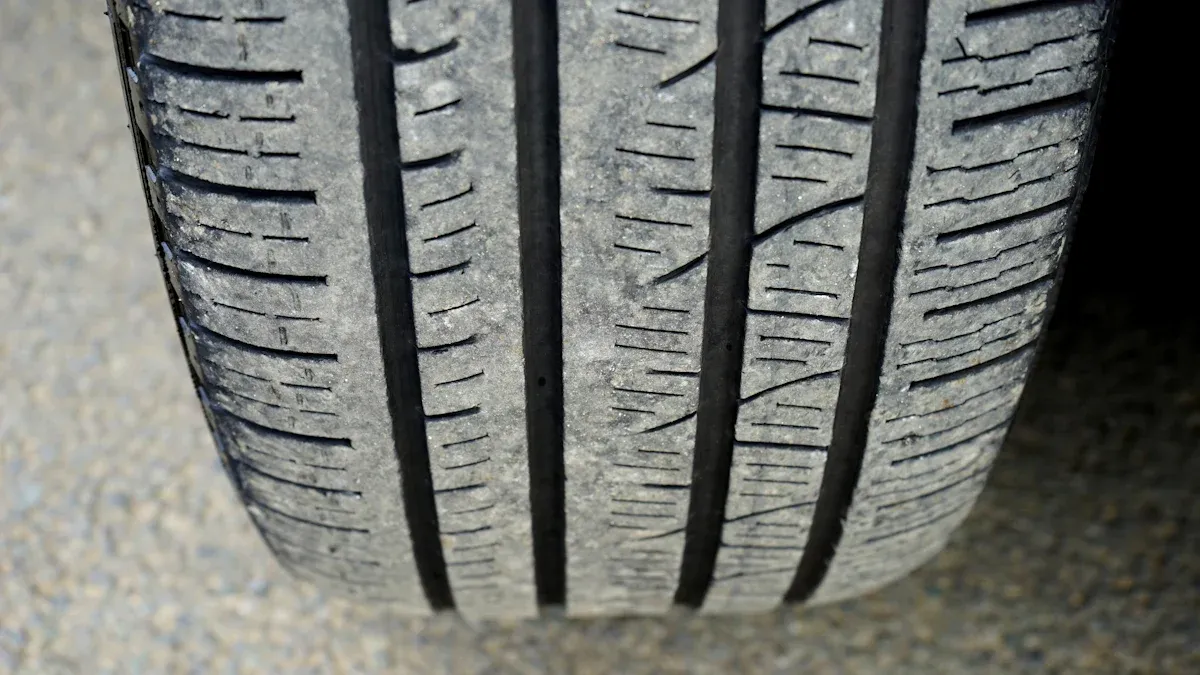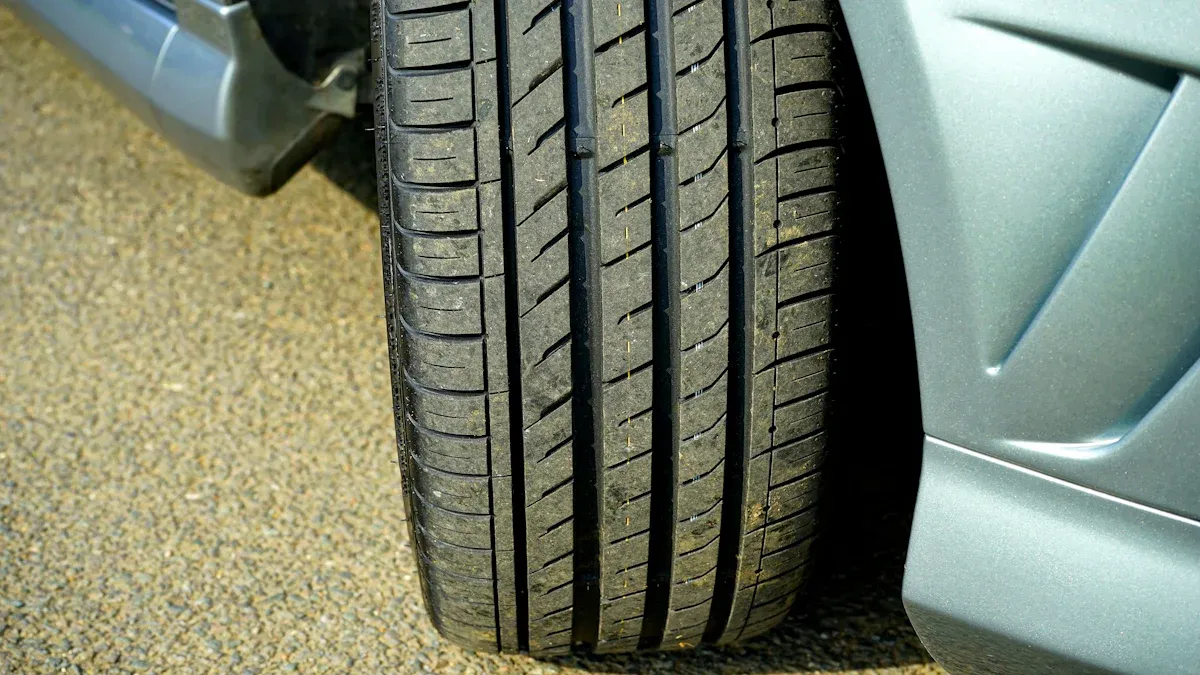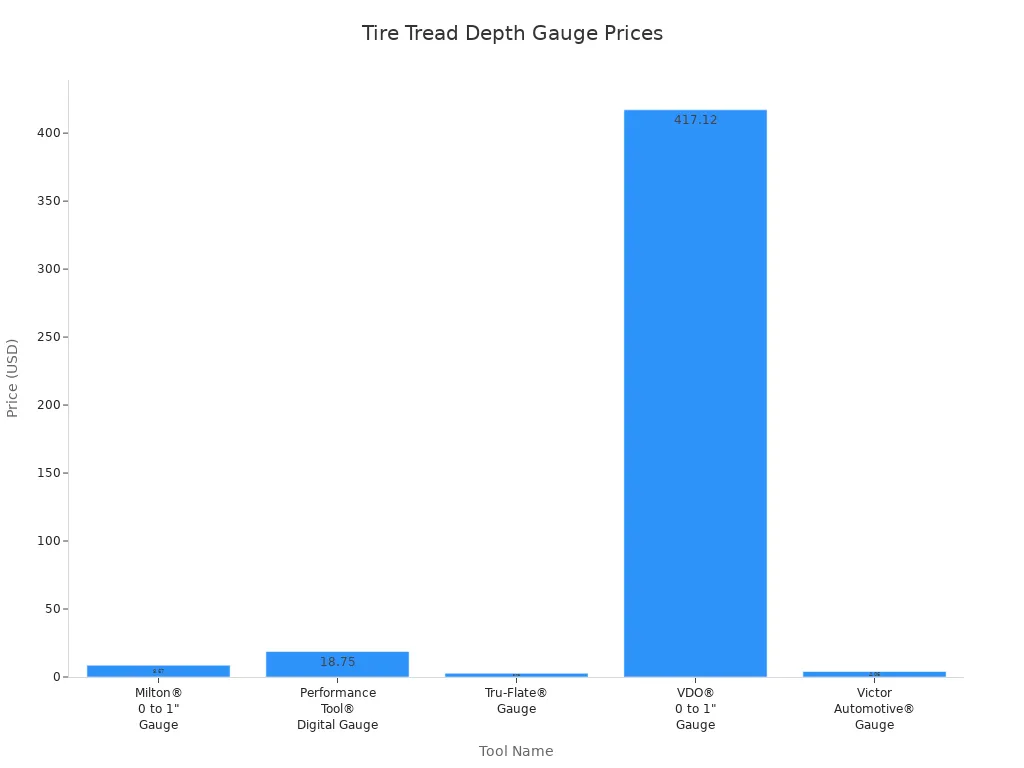
Maintaining the right tire tread depth is very important for fleet safety, especially in light of the upcoming DOT 2025 Rule. Bad tire conditions cause about 11,000 crashes every year in the United States. Vehicles with low tread depth have three times the chance of an accident compared to those with enough tread. Additionally, more than 600 deaths each year are connected to tire problems. Understanding the significance of regular tread checks can help you keep your fleet safe and save lives, particularly as compliance with the DOT 2025 Rule becomes essential.
Βασικά Συμπεράσματα
Check tire tread depth often to keep safe and lower accident chances. Do this at least once a month.
Follow the DOT 2025 Rule: keep a minimum tread depth of 4/32 inches for front tires and 2/32 inches for others.
Make a tire maintenance plan that includes recording checks and replacing tires on time to stay compliant.
Use the right tools like tread depth gauges or the penny test for correct measurements and to find problems early.
Build a safety culture by teaching your team why tread checks matter and doing regular inspections.
Tread Check Importance

Επιπτώσεις στην Ασφάλεια
Checking tire tread regularly is very important for your fleet’s safety. When you keep enough tread depth, your tires grip the road better. This helps prevent skidding, especially in bad weather. Here are some important points to remember:
Enough tread depth helps tires grip, reducing accidents.
Worn tires make it harder to stop quickly.
In wet weather, low tread depth can cause skidding.
By checking tires often, you can find problems before they become serious. Tire issues cause about 8,000 large truck crashes each year in the U.S. This is about 6% of all truck accidents. Regular tread checks can lower these risks and save lives.
Operational Efficiency
Regular tread checks also help your fleet work better. Having a steady tread check plan can save a lot of money. Think about these benefits:
Τύπος Απόδειξης | Λεπτομέρειες |
|---|---|
Annual Savings per Truck | |
Total Annual Savings for Fleets | |
Return on Investment Period | 1-3 years |
By keeping your tires in good shape, you can avoid blowouts and other tire problems that can slow you down. This smart approach helps your fleet run well and keeps everyone safe on the road.
DOT 2025 Rule Overview
The DOT 2025 Rule has important rules for tire tread depth in large fleets. Knowing these rules helps you stay safe and follow the law. Here are the main points you should know:
Key Requirements
Τακτικοί Έλεγχοι: You need to check tire tread depth often to follow the DOT 2025 Rule.
Documentation: Keep clear records of all tread checks and tire care done on your fleet’s tires.
Training: Make sure your maintenance team knows why tread depth matters and how to measure it correctly.
Ελάχιστο Βάθος Πέλματος
The DOT 2025 Rule says how deep the tread must be for different tire types. Following these rules is very important for safety and following the law. Here’s a quick look at the ελάχιστο βάθος πέλματος needed:
Τύπος Ελαστικού | Ελάχιστο Βάθος Πέλματος |
|---|---|
Steer Tires | |
Other Truck/Trailer Tires | 2/32 ίντσες |
These rules match international standards. For steer axles, the minimum tread depth is 4/32 inches. Other axles need at least 2/32 inches. In the U.S., the usual legal limit for tire tread depth is also 2/32 inches.
By following the DOT 2025 Rule, you not only meet the law but also make your fleet safer and more efficient. Checking and keeping the right tread depth can greatly lower the chance of accidents and help your fleet run better.
Measuring Tread Depth

Measuring how deep your tire tread is very important. It helps keep you safe and follow the DOT 2025 Rule. You can use different tools and methods to get accurate measurements.
Tools and Techniques
To measure tread depth well, think about using these tools:
Tool Name | Type | Price | |
|---|---|---|---|
Milton® – 0 to 1″ Tire Thread Depth Gauge with Pocket Clip (448) | Manual Gauge | $8.67 | |
Performance Tool® – AirTight™ 0 to 1″ Digital Tire Tread Depth Gauge (60310) | Digital Gauge | $18.75 | |
Tru-Flate® – Tire Tread Depth Gauge with Pocket Clip (40395) | Manual Gauge | $2.73 | |
VDO® – 0 to 1″ Tire Thread Gauge (2910002373100) | Manual Gauge | $417.12 | |
Victor Automotive® – Chrome Tire Thread Depth Gauge with Pocket Clip (08844-M) | Manual Gauge | $4.06 |
Using these tools will help you get good readings. For a quick check, you can do the penny test. Put a penny in the tread with Lincoln’s head down. If you see the top of Lincoln’s head, your tread is too worn.
Best Practices
To get steady and correct tread depth measurements, follow these best practices:
Check tire tread depth regularly, at least once a month or more for long trips.
Use good measurement tools like a μετρητή βάθους πέλματος or the penny test to check each tire in different spots.
Look for uneven wear by checking the whole tire tread and measuring at spots that seem off.
Pay attention to the lowest tread depth measurement instead of the average for safety and compliance.
By following these practices, you can keep your fleet safe and running well. Regular checks will help you find problems early and stay compliant with the DOT 2025 Rule.

Consequences of Non-Compliance
Legal Ramifications
Not following the DOT 2025 Rule can cause serious legal problems. If your fleet does not meet the tread depth rules, you might face penalties. Here are some possible legal issues:
Consequence Type | Περιγραφή |
|---|---|
Civil Penalties | Drivers could be sued if accidents happen due to violations that cause injuries or damage. |
Criminal Charges | Major violations might lead to criminal charges, which could include jail time. |
Increased Safety Risks | Violations can cause accidents, putting drivers and others on the road in danger. |
Out-of-Service Orders | Some violations mean you must stop operations until you fix the problems. |
Safety Rating Downgrades | Having many violations can hurt a carrier’s safety rating. |
Legal Liabilities | Not complying can increase legal risks if accidents occur. |
Increased Insurance Premiums | Not following the rules can raise insurance costs, which affects your finances. |
These legal problems can create big challenges for your fleet. It is important to follow the rules to avoid these risks.
Financial Impacts
The money problems from not complying can be serious. Insurance companies often raise rates for fleets with bad compliance records. Just one failed audit can make insurance premiums go up. This shows that not complying can hurt your fleet’s finances.
Common reasons for failing DOT tread check inspections include:
Tread depth below 2/32 inches for all other tires
Sidewall bulges or deep cuts
Improper inflation
Each of these problems can lead to expensive repairs and higher costs. Also, if your fleet faces legal issues because of non-compliance, you might have to pay legal fees and settlements. These costs can add up fast and hurt your profits.
In conclusion, the DOT 2025 Rule is very important for keeping large fleets safe and running well. Here are the main points to remember:
The DOT requires a minimum tread depth of 4/32 της ίντσας για μπροστινά ελαστικά και 2/32 της ίντσας for other tires on commercial vehicles.
Regular checks and following tread depth rules are key for safety and performance.
Start a tire maintenance plan that includes regular tread depth checks and timely replacements.
Also, create a safety culture by doing pre-trip and post-trip inspections. Help train drivers and make sure your systems are checked for compliance. By focusing on these practices, you can improve safety and how well your fleet operates.
Συχνές ερωτήσεις
What is the DOT 2025 Rule?
The DOT 2025 Rule sets minimum tread depth requirements for large fleets. It aims to enhance safety by ensuring that tires maintain adequate grip on the road.
How often should I check tire tread depth?
You should check tire tread depth at least once a month. For long trips, consider checking more frequently to ensure safety and compliance.
What tools can I use to measure tread depth?
You can use manual gauges or digital gauges to measure tread depth. The penny test is also a quick method to assess tire wear.
What happens if I don’t comply with the DOT 2025 Rule?
Non-compliance can lead to legal penalties, increased insurance costs, and safety risks. It’s crucial to follow the rules to protect your fleet and finances.
How can I train my team on tread checks?
Provide training sessions that cover the importance of tread depth, measurement techniques, and documentation practices. Regular workshops can reinforce this knowledge.
Δείτε επίσης
Η σημασία της παρακολούθησης του βάθους πέλματος των ελαστικών για την ασφάλεια
Χρησιμοποιώντας μετρητή βάθους πέλματος ελαστικών για ακριβείς μετρήσεις
Κατανόηση Έξυπνων Ανιχνευτών Βάθους Τακουνιών Ελαστικών και της Λειτουργίας τους






